Peristomal II
Allergic Dermatitis
- Skin discoloration around the stoma mirrors the size and shape of the product that is eliciting the allergic skin reaction. It presents as redness and may have surface exudate in lighter Fitzpatrick skin types or darker than usual skin color in persons of colour (brown, black Fitzpatrick classification system for types 5,6) (See figure 6 & 7).
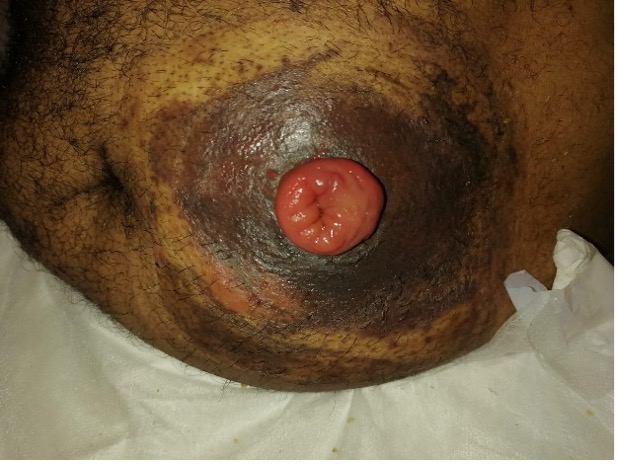 |
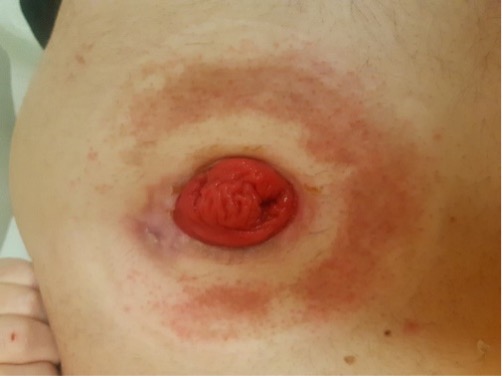 |
| Figure 6: Allergic Dermatitis | Figure 7: Allergic Dermatitis Note that the skin immediately surrounding the stoma is not showing signs of PSC as it was protected by an ostomy skin product (paste or ring). |
- Based on the wound bed preparation model, determine what specific product is causing the allergic dermatitis. Consider a “repeat open application test” or ROAT patch test to see what is the offending substance that is the skin allergen, the source of the dermatitis. Some products contain colophony or it’s derivative Pentylin H as the adhesive in some ostomy products and/or dressings such as hydrocolloids can act as skin allergens. A repeat open application test is performed by drawing a circle the size of a coin on normal skin just below the forearm. Apply the substance (cream, ointment) to the circle twice a day for 2 days. A contact allergy is identified if the inside of the circle turns red or a darker colour post application. (See figure 8).
- Skin inflammation management can include topical steroid spray or lotions prior to reapplying an ostomy appliance. Avoid creams and ointments as they will interfere with the adhesive on the appliance. The skin surface should be dried (use a hairdryer on a cool or room temperature setting if required) prior to the reapplication of the appliance. Change to a different brand of ostomy skin barrier/pouch that does not contain the offending substance.
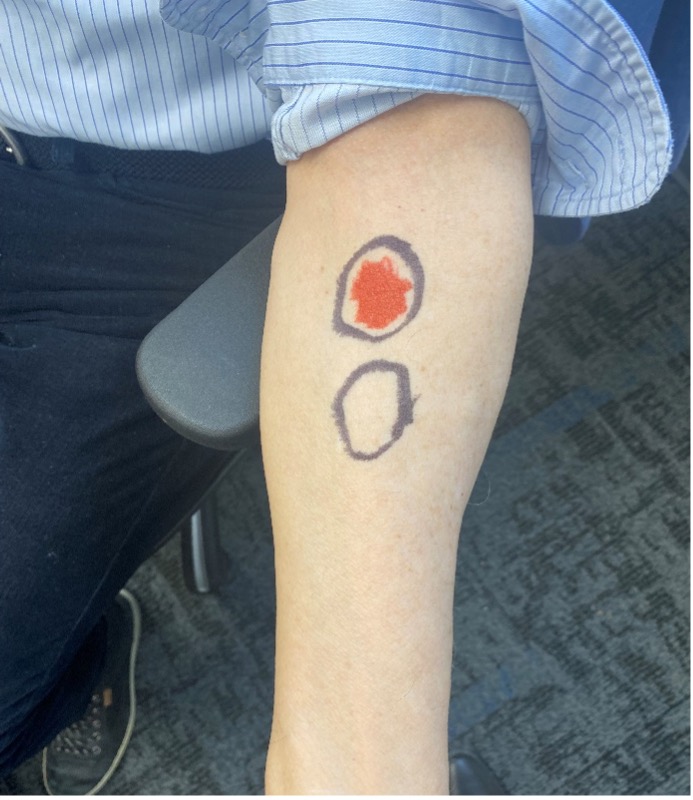 |
|
Figure 8: Open application test |
Table 1: Common Allergens and Products
| Common Allergens | Products |
|---|---|
| Epoxy resins | Plastics, used mainly as adhesives |
| Colophony | Adhesives, plasters, medicated creams, glue |
| Lanolin (derived from sheep) | Cosmetics, medical creams and bandages/strong allergen in persons with atopy |
| Fragrance mix, may cross-react with substances such as balsam of Peru | Moisturizing creams and ointments, air fresheners, washing powders, products may contain masking fragrances |
| Latex or rubber acetylators | Rubber, gloves, syringes, drains |
| Rubber accelerators: mercapto mix/thiazoles, thiuram, carba mix | Rubber shoes, insoles, gloves and elastic products |
| Formaldehyde | Preservative frequently used in household/products, cosmetics, and shampoo |
| Neomycin | Topical antimicrobial creams, Neosporin, triple antibiotic creams/ointments, Bacitracin, Polymyxin |
| Benzocaine is an Ester local anesthetic | Many topical anesthetic creams; xylocaine is safer (Amide local anesthetic cream) |
| Nickel | Keys, coins, zippers, buckles, batteries |
| Modified from Woo, Sibbald, Ayello, Coutts, Garde (2009). Peristomal Skin Complications and Management. Advances in Skin and Wound Care. 22(11): 522-32. | |
Peristomal Hernia
These lesions present as a slight to large protruding bulge around the stoma (See figure 9). Assess if the stoma is viable and that there is no compromise as to blood supply (such as in a necrotic stoma illustrated in figure 10) or bowel obstruction. Is stool or urine still able to exit the stoma or is there a bowel obstruction? Flexible convex skin barrier/pouch that fits over the bulge is a management option as well as the addition of a support/hernia belt. Be careful that the belt is not too tight and is a proper fit.
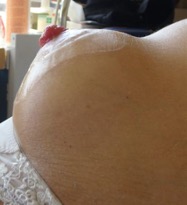 |
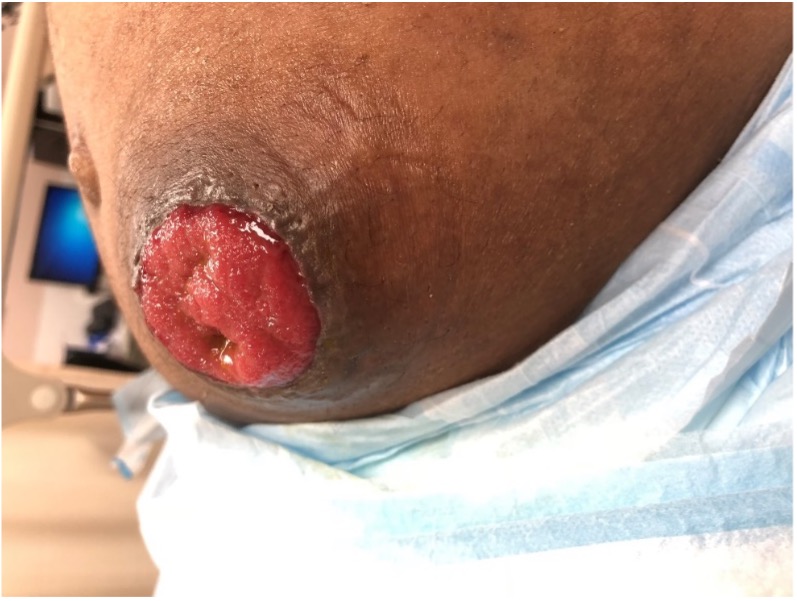 |
| Figure 9: Parastomal Hernia in 2 different Fitzpatrick Skin Classification types | |
Pyoderma Gangrenosum (PG)
Pyoderma gangrenosum (PG) can occur around a stoma especially in person with inflammatory bowel disease (IBD) as well as other conditions without a stoma including rheumatoid arthritis and myeloproliferative disorders (leukemia, lymphoma). Not all cases of PG are associated with an underlying cause. PG is usually painful and features rolled edges when lesions are active. It often has a violaceous or purple edges. It usually can be treated with oral topical or intralesional corticosteroid therapy. One of the stoma care challenges is to atraumatically apply and secure the appliance post local treatment. Debridement is contraindicated during active disease as it may increasing the pathergy (trauma leads to extension of the lesion) and activate the PG to spread outwards increasing the size of the lesion. After involvement on the legs, peristomal pyoderma gangrenosum is the second most common site. (See figure 10)
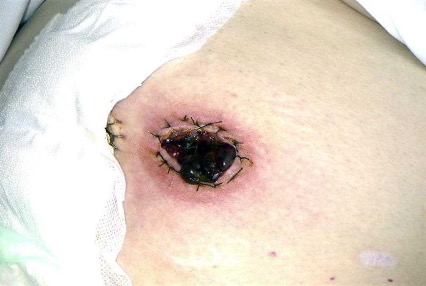 |
|
Figure 10: Necrotic stoma This stoma is necrotic and requires consultation with the surgeon. |

